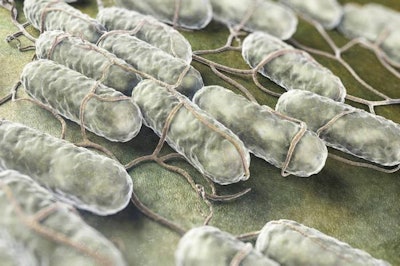
The occurrence of Salmonella in raw pet food seems to be rising in Great Britain. Raw meat pet food had the highest number of Salmonella contaminated samples of all the feeds tested by the UK’s Animal and Plant Health Agency scientists. The agency report “Salmonella in Animals and Feed in Great Britain 2021” documented an upward trend.
In 2021, the agency’s laboratories isolated 295 instances of Salmonella from raw pet food available on the British market. That’s up 8.1% from 2020’s 273 isolations, and 20.4% higher than 2019 with 245 isolations.
Some of these Salmonella bacteria were from strains with resistance to drugs used to fight infection. These potentially dangerous pathogens were found in 71 of the samples taken in 2021. These made up 57.3% of the total regulated varieties of Salmonella found by the Animal and Plant Health Agency in 2021 among all feeds and locations tested. The proportion of drug-resistant Salmonella in British raw meat pet food didn’t increase much over 2020, but did show an upward tendency compared to 2019.
“Contaminated raw meat pet food, which does not undergo any heat treatment to deactivate pathogens, may therefore represent a potential source of infection to both the dogs consuming it and people who handle it, especially if insufficient hygiene measures are adopted,” the report authors wrote.
Antibiotic-resistant germs grown from pet food in Europe
In related news, microbiologists grew antibiotic-resistant Enterococcus bacteria found in samples of both dry and wet pet foods bought in Portugal. The microbes held genes granting resistance to clinically important drugs, such as linezolid and vancomycin. Although pet food hasn’t been documented passing these germs to people, a reservoir of antibiotic resistance genes could be created in the gut of dogs, study co-author Ana Freitas, Ph.D., assistant professor at the University Institute of Health Sciences (Instituto Universitário de Ciências da Saúde) in Portugal, said. That store of genes in the environment could potentially reach humans. The International Journal of Food Microbiology published her teams’ results.
The example of Salmonella, a true zoonotic bacteria, has already demonstrated this, she said.
“One problem is that the requirements of pet food do not include the screening of antibiotic-resistant bacteria such as Enterococci, just pathogenic bacteria like Salmonella or Campylobacter,” she said.
Antibiotic-resistant Enterococcus bacteria, including vancomycin-resistant strains, most frequently infect hospital patients and people with immune system issues. The bacteria cause thousands of deaths in the United States each year, according to the Centers for Disease Control and Prevention.

















